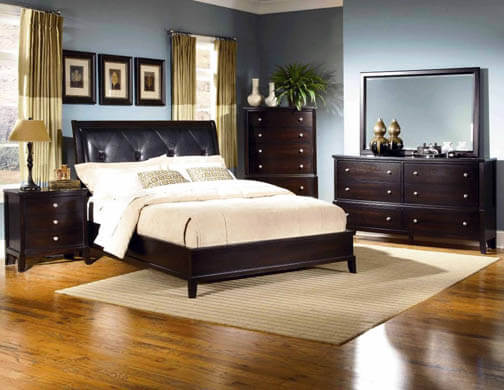Every purchase made online is encrypted with a high level of security you’ve come to expect. Your private information is never shared nor sold, so you can buy with confidence. You can also visit our store if you are in the St. Louis area.

Estimated reading time: 3 minutes
When waterbeds first hit the market, they were nothing more than full-motion free-flow water mattresses, which meant that the water was able to freely flow throughout the bed without being hindered. Who would have thought that one-day waterbeds would evolve into the luxuriously comfortable and supportive mattresses that now exist in so many households today?
Table of Contents
Related Links
Many people who desire a waterbed enjoy the floating sensation, and understand the health benefits of the reduced tossing and turning associated with pressure relief and the therapeutic value of temperature control linked with waterbed mattresses. However, many people like to feel a waterbed but don’t want to feel as though they are lost floating at sea.
Water Bed Bladders
Today water bed bladders contain baffling and are offered in a variety of firmness and support levels which provide users with little or no motion, so you don’t have to deal with the wave movement associated with free-flowing waterbeds. We have some better choices for the rest of us who do not like the movement of water and don’t want to be disturbed when our partner changes sleeping positions in the middle of the night.

Even though full-flowing waterbeds are still very popular, today baffling a water mattress is the norm in virtually all waterbeds being sold. The baffled mattresses come in a variety of motion controls and support levels called semi-waveless, waveless, super-waveless, and ultra-waveless which often include additional support for the back. A reduced-motion mattress does just that; it reduces the amount of movement that you will experience while sleeping on your waterbed.
Reduced Motion Waterbed Mattresses
Reduced motion waterbed mattresses are made by placing various different types of materials inside of the waterbed. These materials range from vinyl pod baffles to water coils, and the most widely used methods include layers of foam or polyester fiber. To give you additional back support the materials are placed in important body support positions. The materials actually act, as barriers and are wall-like to reduce the amount of wave motion that you experience. They can actually reduce the amount of movement from anywhere in the range of 40 percent to 99 percent. This means that a person can have a waterbed that is virtually motion free if they desire it.
With reduced movement waterbeds, you are given the ability to sleep on water, without actually feeling the water moving under your body. Don’t worry; It will not feel like a coil spring mattress and you will still have all of the benefits of owning a waterbed, just without the excess motion.
Conclusion
Many people choose to go with a reduced-motion waterbed. Why, because they desire more support, because of a medical condition, or just because they enjoy a firmer surface. Before the introduction of reduced motion waterbeds, many people thought that they would never own a waterbed because of the movement of full motion beds, however, with new technologies, like dual bladder mattresses and individual temperature control. So what was thought to be a hippie fad has in a short period of time evolved into a healthful and relaxing night of quality sleep.
Contact STL Beds Now
You can also contact us by filling out the form below. Make sure to fill in as many fields as possible so we can respond to you with the most accurate information!
